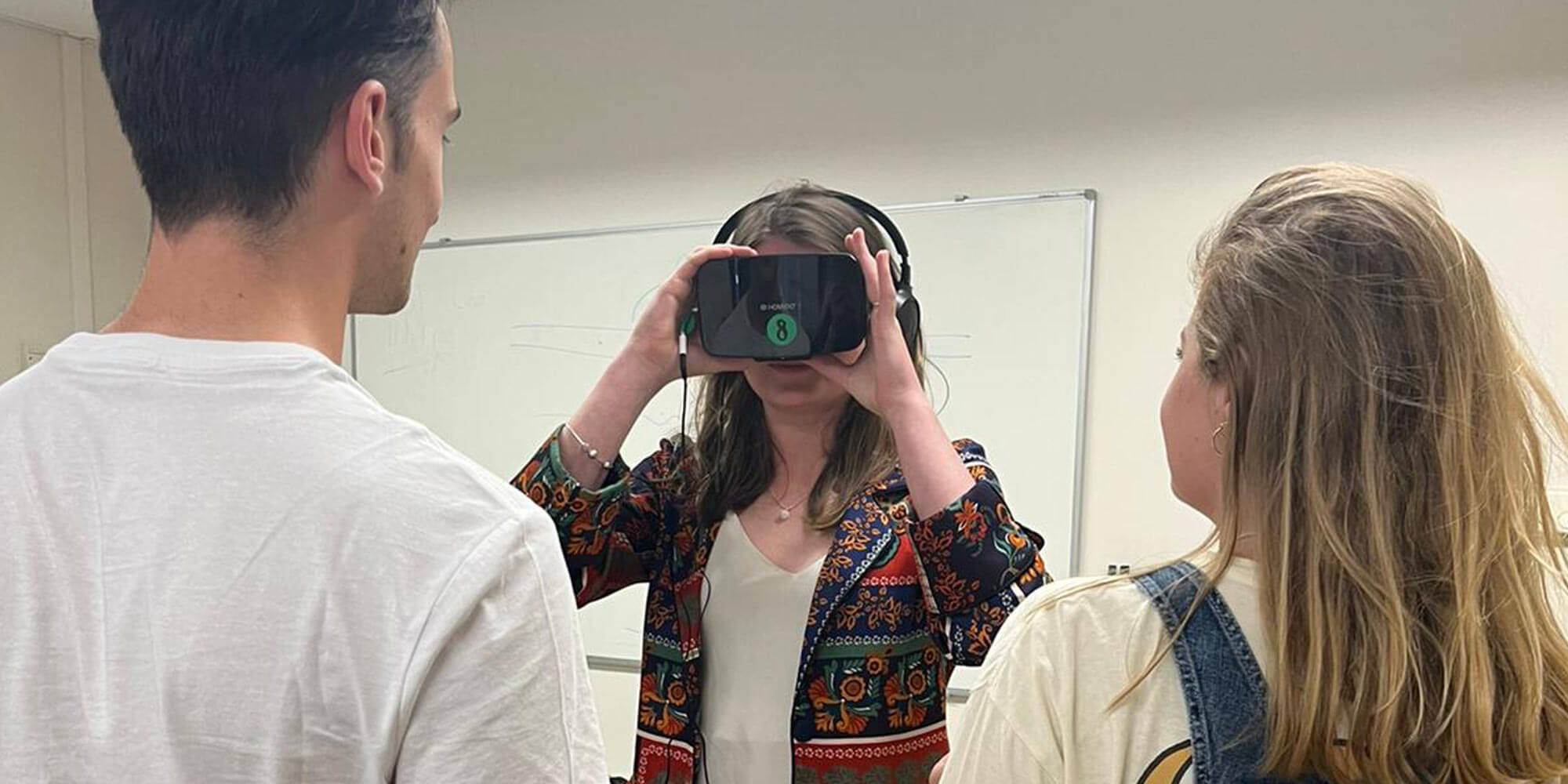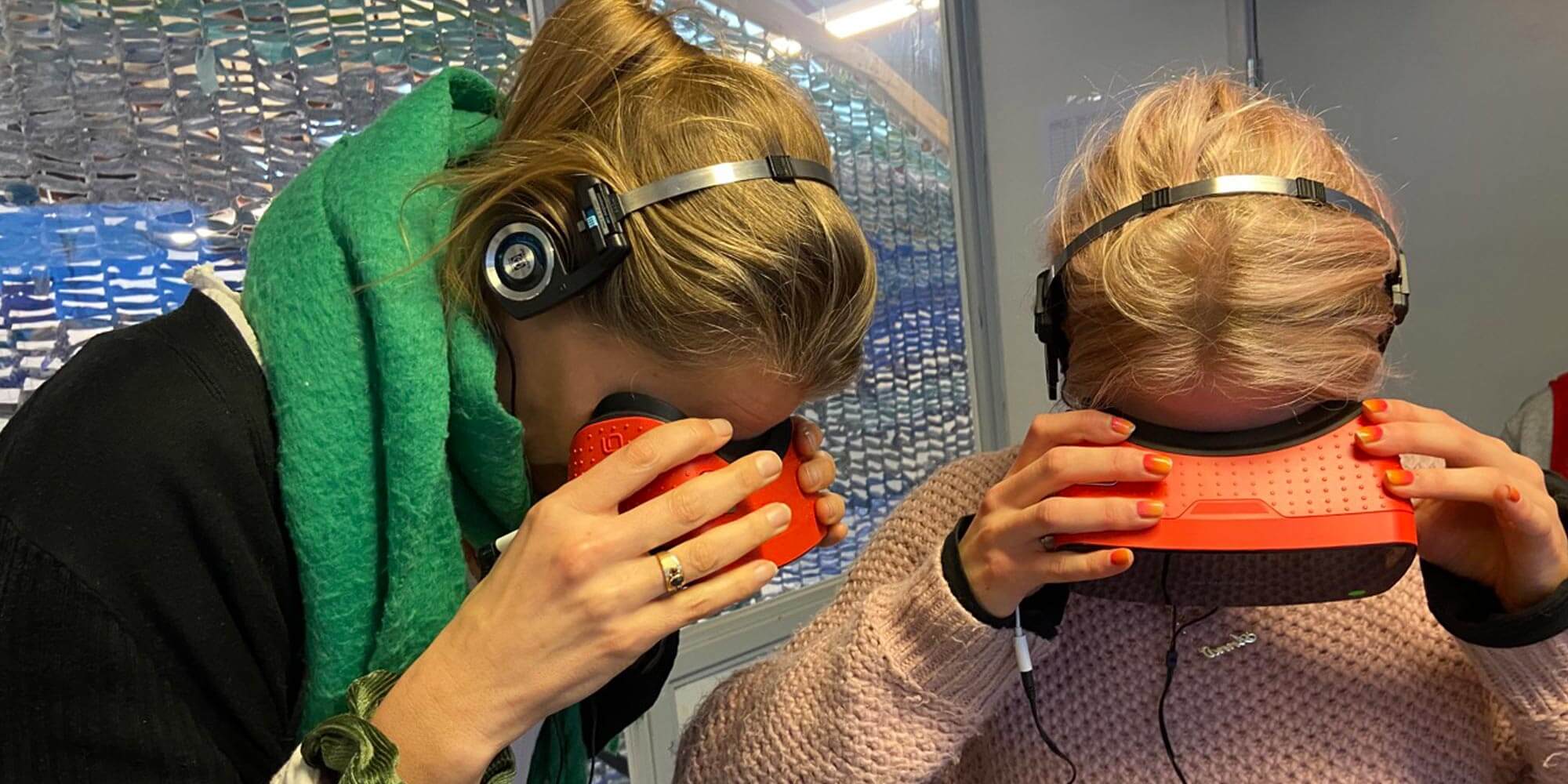Honorary Mention
After my artistic research PhD on psychosis simulation with art and tech, I worked on finding a pattern in the long-ignored subjective data of lived experiencers’ voices. My investigation into their stories has led to a radical artistic research theory, method + new VR psychosis simulation experience to help change our understanding of psychosis. Simplicity that leads to complexity. Which, like previous versions, is educating all who deal with psychosis. The new psychosis simulation will officially be ready to launch and scale into Europe in 2023 as a complete package:
The Anoiksis VR Psychosis Experience is a manifestation of the theory and method. It is a mixed reality VR psychosis simulation that has been developed and pilot tested in the past 2 years. It takes a wearer into a safe interactive waking dream state in the mind of Dr. Green, who is in psychosis, simulating 42+ subjective experiences of psychosis in approx. 8 mins (depending on if one obeys the voices or not).

The Anoiksis Theory is radical as it places our understanding of hallucinations and delusions at the center of a spectrum of healing. The theory builds on the notion that unwellness is not born from a brain that is broken, but a brain doing what it was designed to do, to heal. A sane reaction to insane circumstances. A survival mechanism we all carry, yet, if not recognized or listened to in time, can have extreme and dire consequences. A series of animations explaining the theory were made for low threshold education in 2022/2023.
The Anoiksis Map is a method based on The Anoiksis Theory to help hold space for psychosis, as well as help prevent it through early recognition. In collaboration with students, we learned that the method can be used to hold space for all ‚psychiatric‘ conditions like depression or OCD on a spectrum of subjectivity. Ultimately meaning, if we understand psychosis, we unlock a lost key of understanding all our subjective experiences of distress.
Credits
Financial support:
The Doen Foundation
The Roomforthoughts Foundation.
The Creative Industry Funds
The Mondriaan Funds
Main Team:
Creative developer: Jolijn Friederichs
Lead live experience design advisor: Tim Knoote
Graphic design Anoiksis elements: Teresa Feldman (EE)
Animations: Sigrid Bannenberg
Creative contributions:
Atmospheric sound designs: Pinar Temiz (TR)
Male voice: Nikola Nikolov (BG)
Male voice: Alec Kopyt (USSR)
Female voice: Laura Schuster
Male voice: Konstantin Leonenko (UKR)
Video images: Jeanette Groenendaal
Assets:
Graphics waiting room: 3D Everything
Cope! Skybox pack: Scrycoast
3D model apple Sket.fab: BlockedGravity
Advisors and testers
Xiomara Vado Soto, Megan Mateer (USA), Renana Elran (ISR), Suzanne Meyer, Dr. Wouter Kusters, Dr. Karlijn Roex, Angèle De Jong, Dr. Wim Veling, Alwin Verdonk, Josephine Bosma, Rokus Loopik, Dr. Anna Cornelia Beyer (UK), Sam Gerrits, Jeroen Zwaal, Marcus Graf, Linda Maissan, Michelle Chakkalackal, Ellen Ter Gast, Ellen de Lange-Ros, Kasia Szmigiero (P), Suzanne Meyer, Lieselotte Nooyen, Christien Oudshoorn, Nina Boas, Iris Jousma, Anneke de Weerd and Nikola Nikolov.Dora Grootman, Dr. Sabine Wildevuur, Dr. Tycho Hoogland, Marjelle van Hoorn, Selma Steenhuizen, Ewout Stumphius, THNK School of Creative Leadership, Ashoka, Bureau Solve and Nikola Nikolov.
Impact measurement research (VR)
TNO| innovation for life, Suleika El Fassi, Dutch Police Academy Ossendrecht, AMC UMC Academic Hospital, Zaans Justitieel Centrum, Art Academy St Joost Avans, University of Applied Sciences Amsterdam.
Past financial support
Prins Berhard Cultuur Fonds
Scholingsfonds Kunst en Cultuur
Fonds BKVB
Johnson & Johnson Citizenship Trust in consortium with Janssen and Fonds Psychische Gezondheid
Biography
Dr. Jennifer Kanary Nikolov(a) (NL) is a Canadian born mind-warrior based in The Netherlands. She is founder of Roomforthoughts, an art practice that is ultimately dedicated to understanding the physics of thought in relation to how we experience and construct realities that influence wellbeing. Jennifer holds an artistic research PhD in psychosis simulation with the project *Labyrinth Psychotica*. Her newest project *The Anoiksis Experience* is radically placing the understanding of the function of hallucination and delusion as central to understanding and holding space for all subjectivity of wellbeing.
Jury Statement
Jennifer Kanary’s work aims to educate people who are involved with psychosis in a variety of contexts. Her work makes psychosis tangible for so-called neurotypical people in order to change our understanding of psychosis. It is about better understanding what it means to be another person. This can benefit psychiatrists, family members, or even students, who can relate much better to affected individuals because of this innovative approach. After all, according to studies, one in thirteen people is affected by psychosis or psychotic experiences. The initial inspiration for her work was a tragic event. Her sister-in-law, who suffered from schizophrenia, committed suicide in a state of psychosis. Only afterwards did she realize that she did not understand what her sister-in-law had been going through. Therefore, she began to develop a psychosis simulation using the means of technology and art. In doing so, Kanary used a radical artistic research theory method and a new VR psychosis simulation experience. It is a mixed reality VR psychosis simulation. It can simulate more than 42 subjective psychosis experiences. By creating space for psychosis through the means of art, she aims to prevent precisely these kinds of psychoses through early recognition. Thus, ICT is not only used to make it more comprehensible, but also to build empathy, with a view to creating a healthier and more tolerant society.



